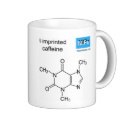|
|
Reference type: Journal
Authors: Saridakis E, Khurshid S, Govada L, Phan Q, Hawkins D, Crichlow GV, Lolis E, Reddy SM, Chayen NE
Article Title: Protein crystallization facilitated by molecularly imprinted polymers.
Publication date: 2011
Journal: Proceedings of the National Academy of Sciences of the United States of America
Volume: 108
Issue: (27)
Page numbers: 11081-11086.
DOI: 10.1073/pnas.1016539108
Alternative URL: http://www.pnas.org/content/108/27/11081
Abstract: We present a previously undescribed initiative and its application, namely the design of molecularly imprinted polymers (MIPs) for producing protein crystals that are essential for determining high-resolution 3D structures of proteins. MIPs, also referred to as "smart materials," are made to contain cavities capable of rebinding protein; thus the fingerprint of the protein created on the polymer allows it to serve as an ideal template for crystal formation. We have shown that six different MIPs induced crystallization of nine proteins, yielding crystals in conditions that do not give crystals otherwise. The incorporation of MIPs in screening experiments gave rise to crystalline hits in 8-10% of the trials for three target proteins. These hits would have been missed using other known nucleants. MIPs also facilitated the formation of large single crystals at metastable conditions for seven proteins. Moreover, the presence of MIPs has led to faster formation of crystals in all cases where crystals would appear eventually and to major improvement in diffraction in some cases. The MIPs were effective for their cognate proteins and also for other proteins, with size compatibility being a likely criterion for efficacy. Atomic force microscopy (AFM) measurements demonstrated specific affinity between the MIP cavities and a protein-functionalized AFM tip, corroborating our hypothesis that due to the recognition of proteins by the cavities, MIPs can act as nucleation-inducing substrates (nucleants) by harnessing the proteins themselves as templates
Template and target information: protein, lysozyme, trypsin, catalase, haemoglobin, intracellular xylanase IXT6-R217W, alpha crustacyanin, human macrophage migration inhibitory factor, MIF
Author keywords: crystallography, critical nucleus, proteomics, macromolecules, vapor diffusion
|


 I imprinted caffeine mug
I imprinted caffeine mug







 Cross-link T-shirt
Cross-link T-shirt







 MIP Workshop WorldTour Ringer T-shirt
MIP Workshop WorldTour Ringer T-shirt






